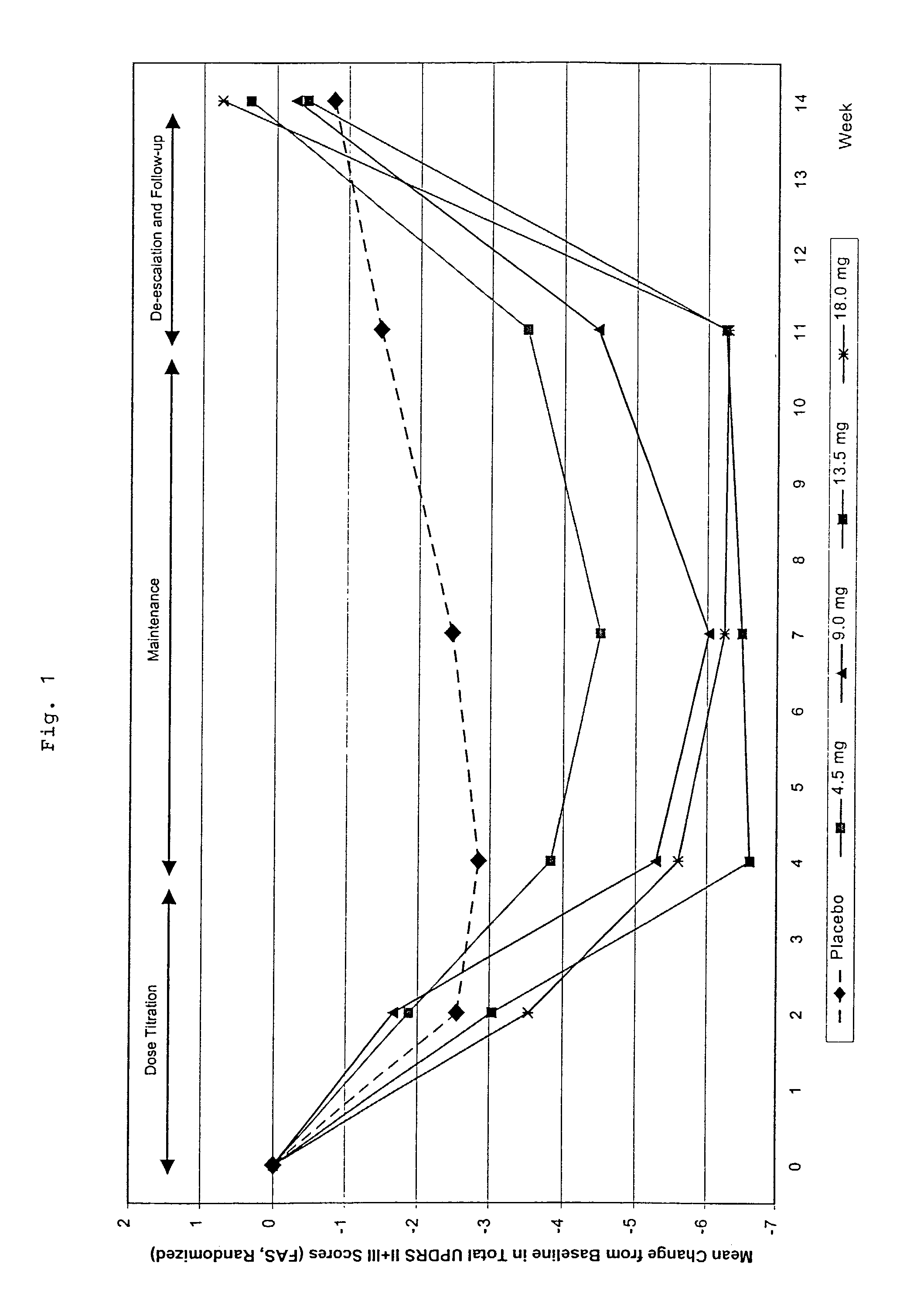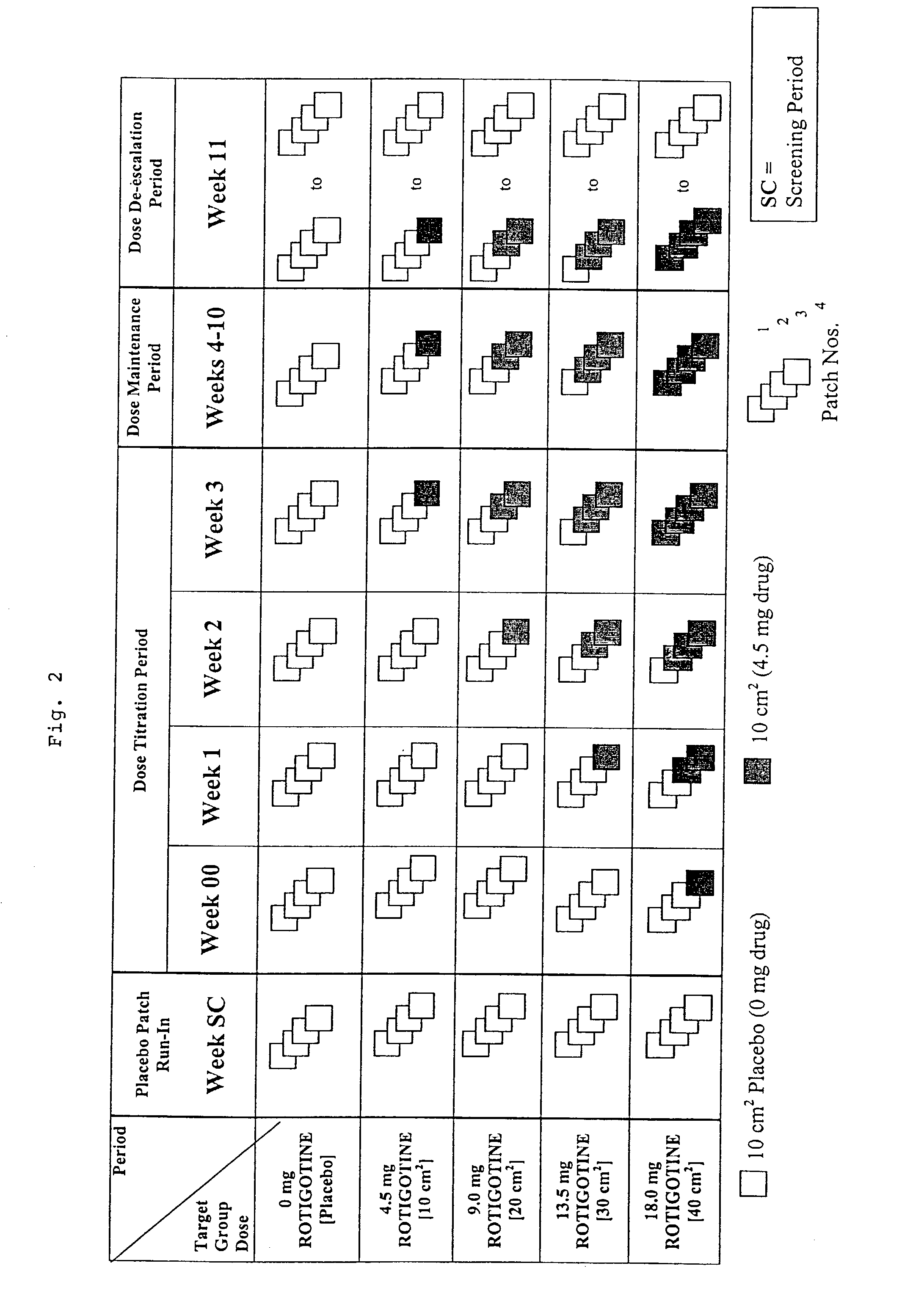Transdermal treatment of parkinson's disease
a technology for parkinson's disease and transdermal treatment, which is applied in the field of transdermal treatment of parkinson's disease, can solve the problems of disease-related symptoms, loss of tonic dopamine secretion and dopamine-related modulation, and deficiency of dopamine in certain brain regions
- Summary
- Abstract
- Description
- Claims
- Application Information
AI Technical Summary
Problems solved by technology
Method used
Image
Examples
Embodiment Construction
[0037] A transdermal therapeutic system using a combination of silicone-type pressure sensitive adhesives was prepared as follows.
[0038] (-)-5,6,7,8-tetrahydro-6-[propyl-[2-(2-thienyl)ethyl]-amino]l-napht-halenol hydrochloride (rotigotine hydrochloride, 150 g) was added to a solution of 17.05 g NaOH in 218 g ethanol (96%). The resulting mixture was stirred for approximately 10 minutes. Then 23.7 g of sodium phosphate buffer solution (8.35 g Na.sub.2HPO.sub.4.times.2H.sub.2O and 16.07 g NaH.sub.2PO.sub.4.times.2H.sub.2O in 90.3 g water) was added. Insoluble or precipitated solids were separated from the mixture by filtration. The filter was rinsed with 60.4 g ethanol (96%) to obtain a particle-free ethanolic solution of rotigotine in the form of the free base.
[0039] The rotigotine free base solution (346.4 g) in ethanol (35% w / w) was mixed with 36.2 g ethanol (96%). The resulting solution was mixed with 109 g of an ethanolic solution containing 25 wt % polyvinylpyrrolidone (KOLLIDON....
PUM
| Property | Measurement | Unit |
|---|---|---|
| area | aaaaa | aaaaa |
| wt % | aaaaa | aaaaa |
| area | aaaaa | aaaaa |
Abstract
Description
Claims
Application Information
 Login to View More
Login to View More - R&D
- Intellectual Property
- Life Sciences
- Materials
- Tech Scout
- Unparalleled Data Quality
- Higher Quality Content
- 60% Fewer Hallucinations
Browse by: Latest US Patents, China's latest patents, Technical Efficacy Thesaurus, Application Domain, Technology Topic, Popular Technical Reports.
© 2025 PatSnap. All rights reserved.Legal|Privacy policy|Modern Slavery Act Transparency Statement|Sitemap|About US| Contact US: help@patsnap.com



